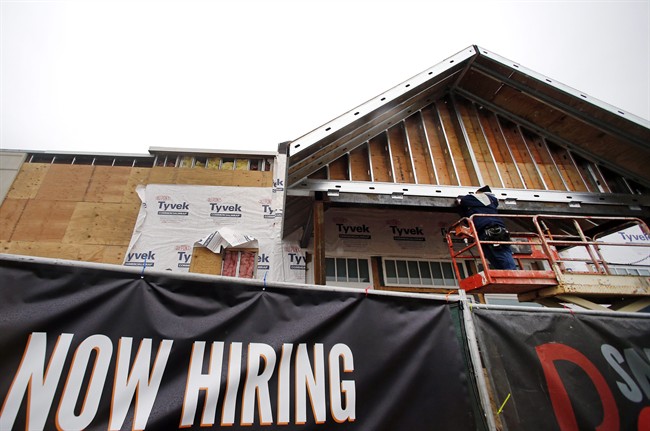In speeches last week, NDP leader Tom Mulcair criticized Stephen Harper’s economic record. On August 12, he said, “Mr. Harper boasts of job creation, but you know what? The jobs that are being created are mostly part-time, precarious, low-paid jobs.” He made the same point again Friday morning.

But is it true? Let’s examine each point in turn.
Part-time
Are most of the new jobs being created part-time? In July, they were. According to Statistics Canada, in July 2015, the economy lost 17,300 full-time jobs, but added 23,900 part-time ones.
But, that’s just looking at the change over one month. If you compare July 2015 to July 2014, 255,400 more people were working full-time and 94,000 fewer people were working part-time.
Since 2006, when Harper took power, the economy has added 453,100 part-time jobs, but 953,100 full-time ones. The percentage of workers working part-time has grown very slightly over that time period, from 18 to 19 per cent – but more full-time jobs have been added than part-time ones overall.
Mulcair may be referring instead to the rate of growth – that part-time jobs are growing faster than full-time ones. A March 2015 CIBC Economics report, cited by the NDP, used that measure to argue that the quality of jobs in Canada was declining.
According to Statistics Canada the number of full-time jobs grew by 7 per cent between 2006 and 2014, while the number of part-time jobs grew by 15 per cent in that same time period. It’s a fine distinction though, and part-time jobs are still a long way off from overtaking full-time ones.
Precarious
Precarious employment is much harder to measure, mostly because it’s hard to define.
One source the NDP cited when Global News asked about Mulcair’s comments was a 2013 United Way report that discussed increasingly precarious employment in the Greater Toronto Area. In addition to its own survey data, the report cites two measures: temporary employment and self-employment.
Since 2006, according to Statistics Canada, the economy added 195,900 temporary jobs and 988,800 permanent ones. The percentage of total employees who have temporary employment arrangements has remained remarkably steady, staying between 12 and 14 per cent over the past decade. Interestingly, it was at its lowest percentage during the height of the recession in 2008 and 2009 – suggesting temporary employees are indeed more likely to lose their jobs as things get tight for employers.
Another factor used in the United Way report to estimate the precariousness of employment is the number of individuals who are self-employed, with no paid help or employees. The report explains that such individuals are often in a difficult situation, as they have no benefits and sometimes rely on a small handful of clients to keep afloat. This isn’t the case with everyone in this situation, but it’s still worth looking at.
There were 255,400 more self-employed people without employees in 2014 compared to 2006, though they have remained about the same percentage of the working population. They were 10.6 per cent of all employed people over 15 in 2014, compared to 9.9 per cent in 2006.
They’re growing at a higher rate overall, though: There were 15.7 per cent more self-employed people without employees in 2014 than in 2006. The overall number of employed people grew by 9 per cent over the same time frame.
Low-paid
It’s hard to say whether the newly-created jobs are lower-paying than others. The median Canadian hourly wages have increased slightly: from $19.90 in 2006 to $21 in 2014 (in 2014 dollars).
It’s worth noting, though, that a full-time worker makes a lot more on an hourly basis than a part-time worker: $23.08 compared to $13 in 2014. Similarly, the median wage for a permanent employee was $22/hour in 2014, compared to $16 for a temporary employee.
So – is Mulcair right? Generally, no. While it’s unclear exactly what time frame he is talking about, since Harper took power in 2006, most of the jobs created have been full-time and not significantly more precarious, at least as defined by temporary employment and self-employment. There’s still a lot of academic argument on this question though, and a lot depends on how you define “precarious employment.”



Comments